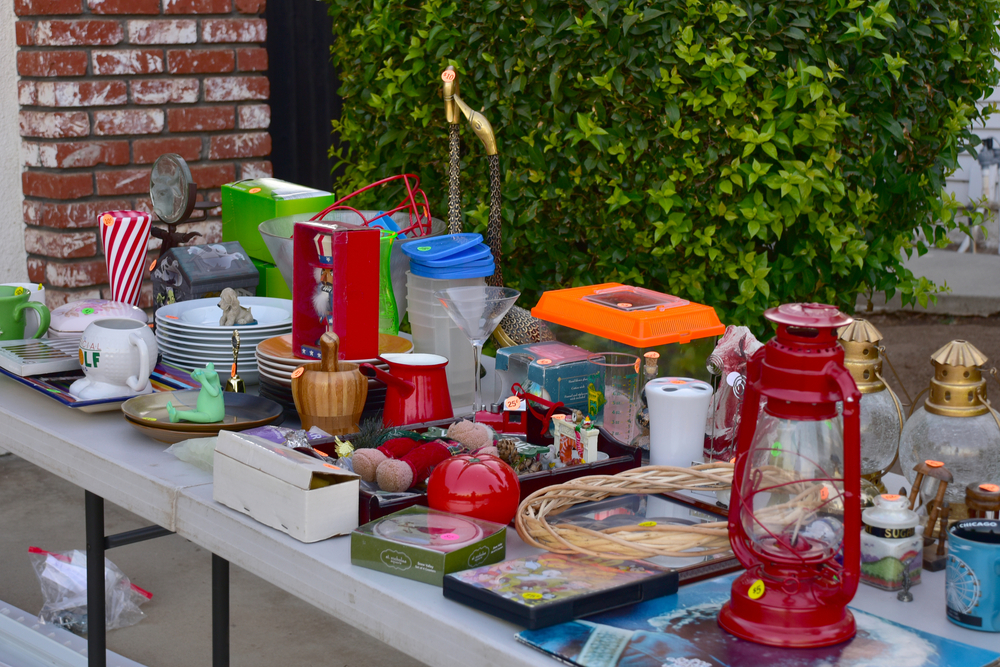Most preppers today have settled on a plan to bug in, rather than bug out, for most survival scenarios. That makes a lot of sense, when possible, because home provides us with shelter, as well as having everything we own at our fingertips, where we might be able to use it for survival. Even so, we should always have a backup plan, allowing us to bug out, should it become necessary.
But having all that stuff in our homes, as we are bugging in, doesn’t necessarily mean that we have everything that we need. Some things we have in our homes will be totally worthless in a survival situation. Other things, which we might expect to be able to use, may be just as useless, because of a lack of electric power. Rather, we will need the old-fashioned tools to do those tasks, which don’t require electricity. We’re going to have to depend on good old muscle power.
The funny thing is, that while all the manually powered tools that we need are still available, few of us have them. As a society, we’ve become highly dependent on power tools, to the point where many people not only don’t bother buying hand tools, but don’t really know how to use them properly. Should we ever end up in a grid-down situation, there are going to be a lot of people struggling to do some rather basic thing, that aren’t really considered survival skills.
As a woodworker, I use a combination of hand and power tools. The funny thing about that is, that as I gain experience, I find myself using hand tools more than ever before. There are just some things that are easier to do with a hand saw, than they are with a power saw, assuming you know how to do them and have the right sort of saw to work with.
But saws, while an important tool, aren’t the whole story. There are a number of different types of tools we should have and know how to use. Some will be essential to our survival, while others will end up being needed for home repairs and to make things that we find we’re going to need.
Axe
The axe is the classic tool for cutting down trees, something that will be necessary for firewood, if nothing else. Axes are characterized by a rather narrow head, holding a somewhat sharp blade. Surprisingly, the steel isn’t very hard, so can get bent if you hit a rock or nail. But that is necessary, to keep the edge of the axe from being brittle. A true woodcutter’s axe will have a long, slightly curved handle. This is different than the various types of axes which are used for working logs. Those have shorter, straight handles.
Don’t mistake an axe that is intended for use as a weapon for an axe that is used to cut trees. While all those axes have their roots in those used as tools, they aren’t as effective for felling a tree, as the type I described above.
Maul
People misuse the word maul regularly, calling sledge hammers and other tools mauls. However, the maul is actually an axe-like tool, close enough in appearance to the axe, that most people can’t tell the difference. But the maul is actually different, in that the head is wider than that of an axe, making more of a wedge and doesn’t necessarily need to be as sharp.
The idea behind this wider head is to separate wood fibers, as the head sinks into the end of a log that is being split. This greatly speeds up the splitting action, over using an axe to split wood. The axe can’t effectively replace the maul any more than the maul can effectively replace the axe.
Log Splitter
Using the maul to split wood is a hefty upper-body workout. For that reason, you might want to have some other sort of log splitter. There are a number of different types to consider, including ones where the log is placed in and a sledge hammer is used to drive the log down over a blade and hydraulic log splitters that operate by hand power. Avoid any sort of gasoline powered splitter, as you don’t know if fuel will be available. Even if it is available, it probably won’t be available for long.
Regardless of the kind you choose, work with it enough so that you are comfortable using it, before you really need it.
Bucking Saw
The bucking saw is a specialty saw, used for “bucking” a log down into sections for splitting to be used as firewood. Traditional bucking saws are the hold “H” frame saw, with a windlass across the upper legs of the “H” to provide blade tension. You can also buy “D” shaped saws or even two-man saws, much like lumberjacks of old used to fell large trees. Regardless of the appearance of the saw, the main thing is that you can use it to break logs down into manageable sections for firewood.
Smaller saws, like handheld pruning saws, can be used for cutting off small branches, rather than having to use a full-sized bucking saw.
Bucking Sawhorse
Working with a bucking saw requires the ability to raise the log being cut up off the ground, onto a stand. This is the bucking sawhorse, which differs from other sawhorses in that it doesn’t have a top horizontal bar for the wood to sit on; but rather is “X” shaped, so that the log can sit into the “V” formed by the top part of the “X.”
Hand Saw
The bucking saw above is great for its purpose; but is pretty much worthless for general carpentry and woodworking. For that you need some sort of hand saw or even several different types of hand saws. I have found the Japanese style saws, which cut on the pull stroke, rather than the push stroke, are easier to use, especially for making accurate cuts.
Keep in mind that ripping (cutting with the grain direction) and crosscutting (cutting across the grain) require different saws, with the teeth on the rip saw being larger than those on the crosscut saw. This is true for both western and Japanese style saws. Some Japanese style saws are two-sided, with a rip blade on one side and a crosscut blade on the other.
Froe
The froe is a different sort of tool for splitting logs. In this case, the idea is being able to split logs to make shingles. That might be necessary if your roof becomes damaged and springs a leak. The tool itself is “L” shaped, with a handle 90-degees from the blade.
In use, the log to be split into shingles is set on end and the blade of the froe set on the end of the log, where you desire to split it. There is a handle, which should be sticking up vertically when the froe is in position. A heavy wood carving mallet (round, all hardwood mallet) is used to strike the back of the blade, forcing it into the wood. Once the blade is in far enough, sideways pressure on the handle, twisting the blade, will help with the splitting action.
Hand Drill
Besides cutting wood with a saw and attaching it together with nails, the next most common operation is making holes in it. Today, we do this with cordless drills, which are the power tool that most people use the most. Unfortunately, without electricity to recharge those batteries, those drills will only be good as paperweights. You’ll need some sort of hand drill to use.
There are different types of hand drills, generally speaking for drilling different sized holes. An eggbeater drill can be used well for small holes; but doesn’t have the leverage needed for larger ones. That requires the use of a brace and bit.
Shovels
There’s a strong possibility that you’re going to have to dig holes for something; perhaps for an outhouse if nothing else. That means having a shovel or two around to dig with. Make sure that you buy shovels that will work for the type of digging that you’re going to be doing and don’t expect one shovel alone to do everything.
Mattock
While you’re looking at shovels, better pick up a mattock as well, what some people refer to as a pick axe. This tool has a sharp pick on one side of the T-shaped head, along with a wider cutting surface on the other side. Between the two sides, it’s great for breaking up hard ground and prying loose rocks and roots that might be in the way. A good mattock will make digging holes much easier, than trying to do it with a shovel alone.
Wagon or Cart
Any work you do outside, whether building that outhouse or cutting firewood is going to require moving heavy things around. That’s pretty much inevitable. With that being the case, it only makes sense to have a means of moving heavy things around, without having to use your car or truck to do it. That means having some sort of wagon or cart available, which can be moved relatively easily with hand power.
Hand Pump
You want to make sure that you have some sort of general-purpose hand pump, other than your well pump. You never know what something might flood, like your basement. A pump might be necessary, so that you can clean out all that water.
General Hand Tools
Finally, you want to be ready for things to break. That happens all the time and it is likely to happen even more during a time of crisis. A good, complete set of hand tools, covering all the bases, will help make it easier for you to undertake your own repairs.









































































When thinking of grid-down prepping, don’t forget to think “inside the box” as well! The washer, drier, blender, food processor, and coffee maker won’t work either. Neither will the stove or the vacuum cleaner. ‘Got a gas stove? Yes, you can light the burners with a match, but if your have a modern stove, the oven won’t work. The thermostat and fuel controls on them are computer-driven. …the refrigerator goes without saying… You will need to tools to do all your food preservation, cooking and cleaning by hand. Brushes, brooms, and a good set of knives come immediately to mind. Try to get ahead of this as much as you can. More importantly, learn how to USE these items ahead of time!
As well as perhaps having what you need for REPAIRING those very same tools. Even good quality tools are not indestructible, though some are pretty close to it.
My Estwing hammers and hatchets are PRACTICALLY indestructible,,,,,, as are plenty of others. But still, being able to KEEP them in good working condition is worth the time to consider it. (Old motor oil has lots of uses in this regard too, anti rust trick, etc)
Good article, especially for those new to the idea of being ready for things not going well, thanks.
When I was young, 1950s, we lived in the age of post forrest clearance days and had all the hand tools that went with that. One of these was a ‘maul’ which had a large round wooden head ( 5 inches in diamtre) with iron rings (1 1/2 X 1/2 inch) to add weight, contain the wood and stop it splitting. So we have a large heavy instrument which was use to drive wedges for splitting and to tip trees over in the direction requires. This ‘maul’ was also used for many general purposes that required a heavy but soft impact. – a very useful tool.